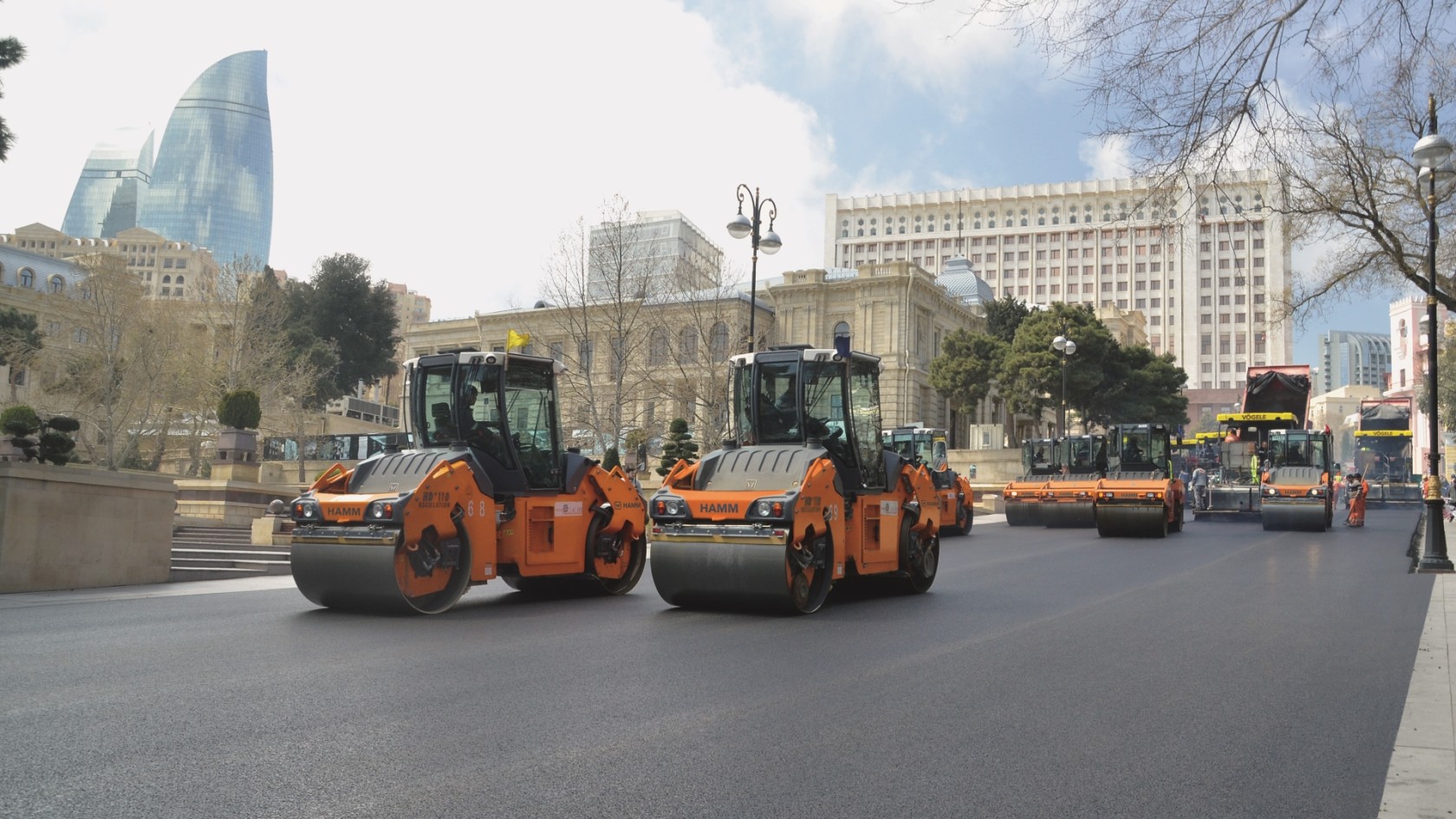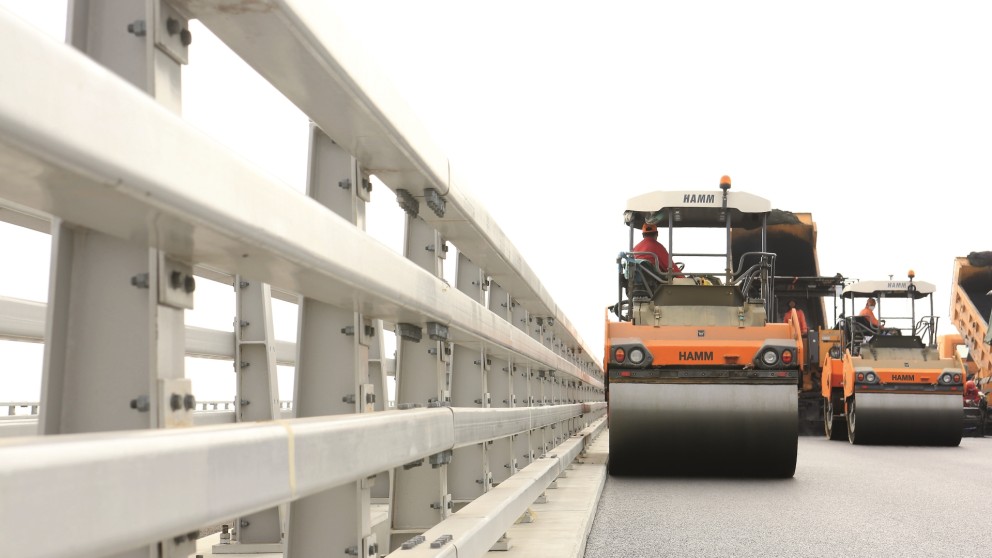Asphalt compaction


Compaction of the asphalt pavement should yield a uniform surface with the greatest possible skid resistance and ensure that the individual asphalt courses are firmly and durably interlinked to produce high stability and wear resistance, as well as enduring evenness. Rollers or compactors by Hamm reduce the number of voids. This makes the asphalt more resistant to stress and extends its durability.
What type of mix will be compacted, and what are the thicknesses of the individual layers? Where’s the job location? On a motorway, in a residential area, on a bridge? The answers to these questions will determine the type of roller to be used for compaction. What will be the paving width and paving speed? That will determine the number of rollers to be used.
Dynamic compaction on an elevated road or bridge is possible with HAMM oscillation technology. This system allows even thin layers to be compacted without stressing the structures.
Rollers are heavy road construction machines used for compacting hot and therefore flexible asphalt pavements. To prevent them from causing damage to the new asphalt surface, they must not come to a halt during the compacting operation. For precisely that reason, machine maintenance is of particular importance. In addition to that, checks need to be carried out prior to commencing work to make sure that the drum is clean, that fuel and engine oil are available in sufficient quantities, and that the water tank has sufficient water for the drum spray system.
Basically, compaction becomes more effective with increasing temperature of the paved mix. The most advantageous temperature range depends on the composition of the mix, the thickness of the pavement and the type of binder used.
“Dynamic compaction with HAMM oscillation rollers is ideal to prevent damage to the underlying cold layer.”
HAMM Oscillation